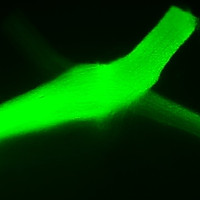Department of Ophthalmology, University of Pittsburgh School of Medicine
Our Research Goal
Understanding molecular mechanisms of preventing RGC death, re-establishing neuronal wiring and recovering visual functions, leads to providing new targets for preventive and therapeutic interventions for traumatic optic neuropathy and glaucoma.
The Approach

Boosting axon regrowth
From a high-throughput in vitro axonal regeneration assay, small molecules have been identified to overcome inhibitory cues for axonal outgrowth of several types of neurons (Li, Kuwajima et al., 2016). These molecular targets could be involved in axonal
regrowth after nerve injury.

Extrinsic molecular signals
After nerve injury and in neurodegenerative diseases, non-neuronal cells such as glial cells affect neuronal survival or death and axon regeneration. Among them, myelin debris-induced signals inhibit RGC axon regeneration (Li, Kuwajima et al., 2016). Other molecular signals from glial cells could affect each regenerative step.

Reprogramming RGCs
During development, retinal axon growth and guidance are regulated by multiple guidance molecules and transcription factors (Mason et al., 2013, Book chapter). These molecules could be key mediators for axon regeneration and rewiring after injury.
Funding
Current
Shaffer Research Grant by Glaucoma Research Foundation
Department of Ophthalmology, The Louis J. Fox Center for Vision Restoration, University of Pittsburgh School of Medicine
Hillman Collaborative Grant by Eye and Ear Foundation of Pittsburgh
Past
Research to Prevent Blindness/Ernest & Elizabeth Althouse/Dolly Green Special Scholar Award

Investigator-Initiated Research Award by the Department of Defense

